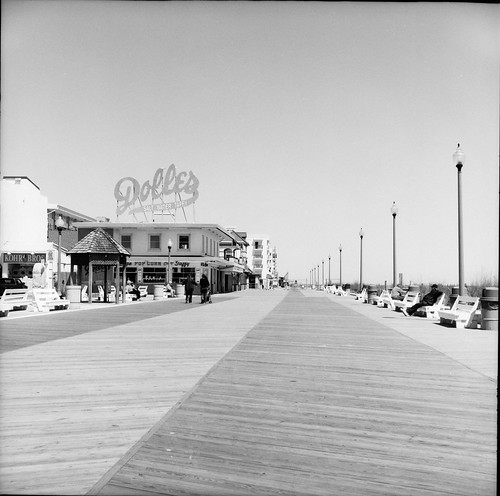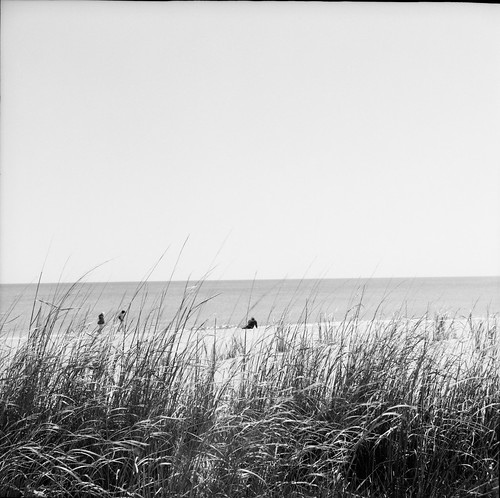Results from my First Yashica-A Roll
By EricMesa
- 5 minutes read - 952 words Last time I wrote about my dabbling in the film world I had had 3 Holga rolls developed. My Yashica and Franka Solida III had arrived after my trip to NYC so I had yet to run any film through them. I shot a few frames with each camera when Danny and Dina came to visit in April and then let the cameras lay dormant. As I explained in a previous post, with the cost of film and development so high, these cameras were somewhat for special occasions. I took the cameras with me to Delaware (a trip I have yet to blog about), and shot with the Holga and Yashica.
Last time I wrote about my dabbling in the film world I had had 3 Holga rolls developed. My Yashica and Franka Solida III had arrived after my trip to NYC so I had yet to run any film through them. I shot a few frames with each camera when Danny and Dina came to visit in April and then let the cameras lay dormant. As I explained in a previous post, with the cost of film and development so high, these cameras were somewhat for special occasions. I took the cameras with me to Delaware (a trip I have yet to blog about), and shot with the Holga and Yashica.
It was definitely interesting to have that roll completed, but sitting in my room for a week before I took it in and another week before I picked it up from the developer. Even though I had my booklet where I had written all the subjects and exposure settings, it was still a great joy and surprise to see the results when I picked it up from L’Imagerie. And, once I got them scanned into the computer, it was great to see them magnified.
I must say that I am very pleased with the results. The glass is top notch – it’s a shame that kit lenses with today’s cameras don’t seem to match this quality at all. Of course, it’s hard to tell if the sharpness comes from the glass alone or from the use of medium format film vs an APS digital sensor. I’ve read that the larger the film, the shallower the depth of field. This is apparent in my shot of Danny where I’m at f/3.5 and the depth of field seems to be closer to f/2.8 or f/2.0 on my Rebel XTi.
Another thing that’s amazing with this camera is that it is so easy to achieve proper focus. The camera has a focusing screen and a built-in magnifying glass to make sure you get your subject in focus. So I will definitely be playing some more with the camera in the f/3.5 range for its depth of field effects rather than because of low light situations (as was the case with the shot of Danny). I know that some people acquire focusing screens for their dSLRs to assist with manual focusing. I don’t know what’s involved in setting that up, but I think that all cameras in Canon’s pro range ought to come with it standard. It is so much easier to see if your subject is in proper focus rather than it LOOKING like it’s in focus and definitely not being in focus when you look on your computer screen.
This camera, like a lot of older medium format cameras, does not have a built-in light meter. So, for the indoor shots, I used my dSLR to give me the proper shutter speed given the ISO and aperture I selected. When I was outside I decided to use the Sunny 16 rule. This worked very well – basically I just set my aperture to f/16 and my shutter speed near 1/100s (because the ISO was near 100) and all my shots were properly exposed. It worked well enough, though not perfectly. However, given that I was shooting into the sky at a white lighthouse and onto sand and other light-colour objects, this system worked better and more consistently than using a meter. Under such conditions I usually have to first trust my dSLR’s meter then check the results and adjust for the exposure area. I usually don’t mind it too much (except for situations where I’m chasing birds around in light and dark areas), but it’s not an acceptable system when shooting film.
So now I’ve shot film with a camera that’s more precise and controllable than a Holga. I really enjoy the process of using the camera. I like the manual, precise focus. I like the slightly more contemplative nature of using the camera. The results are great — very sharp and different. But I’m not, as of right now, as enthusiastic with the results as with the Holga. I think part of it was that the Holga was my first return to film and I may have felt that way with whichever camera I used first. But part of it is that the images, while sharp, lack something. I’m not sure what. I think, perhaps, next time I go out with black and white film in that camera, I might try and improvise a red filter to try and introduce some more contrast. And, I need to shoot colour with that camera to see how that comes out. It may also be that the specific film stock I chose tends to produce more average results rather than something grainy or punchy.
I still haven’t finished my first roll through the Franks Solids III. I did put a 400 ISO film in there, so it’s going to inherently be more grainy than what I get my first time through the Yashica. But, given that it’s a German camera, I’m pretty excited about how good the optics may be. The real kicker with that camera is that, from the way it’s built, you can’t tell if your focus is right on. You just need to estimate and I am very bad at estimating distance. I think that may end up being too frustrating of a camera for me to use most of the time. Time will tell if I change my mind.
And I’m still enjoying the Holga. No matter what I’ll probably always have a roll in there for odd photos here and there that need to be captured by that plastic lens.



